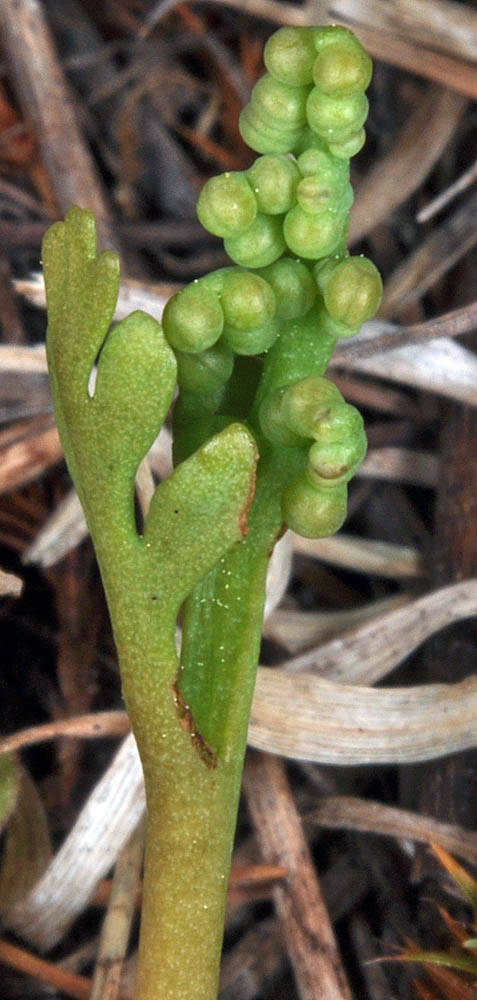Botrychium hesperium
western moonwort
37(29â50) Ξm.
well developed; greater than 3 cm, with a reddish brown stripe below the trophophore.
short-stalked (stalk usually shorter than distance between first and second pairs of pinnae);
blade pinnate-pinnatifid, subdeltate; to 5 cm long; dull gray-green and usually appearing glaucous;
pinnae ascending, usually overlapping; ovate to lanceolate, broadly attached to the rachis; broadest at or below the middle, asymmetrically lobed with basiscopic lobes enlarged;
pinnae lobes with rounded apices; the margins slightly rolled; lowest pinnae often exaggerated; up to twice as long as the adjacent pinnae;
sporangia rarely present on pinnae margins.
erect with stalk up to 2 times as long as the trophophore at spore release; in larger plants becoming ternately branched with lateral branches nearly as long as main axis.
=180 (allotetraploid, derived from B. lanceolatum and an unknown diploid).
Botrychium hesperium
At upper montane to subalpine elevations in open, mesic meadows with low, herbaceous cover. Also in historically disturbed areas with gravelly soil, such as road shoulders, ski slopes, or mine tailings. 1400â1700 m. BW. ID, WA; western North America. Native.
Unpublished forms with deeply lobed pinnae (B. hesperium var. âfenestratumâ and B. âvenulosumâ) do not warrant taxonomic recognition.
Ben Legler
- Local floras:
BC,
OR,
WA
- Local Web sites:
Flora NW,
PNW Herbaria
WildflowerSearch
iNaturalist (observations)
USDA Plants Database
- LBJ Wildflower Center
- SEINet
- Plants of the World Online
- Encyclopedia of Life
- Wikipedia
- Google Image Search



